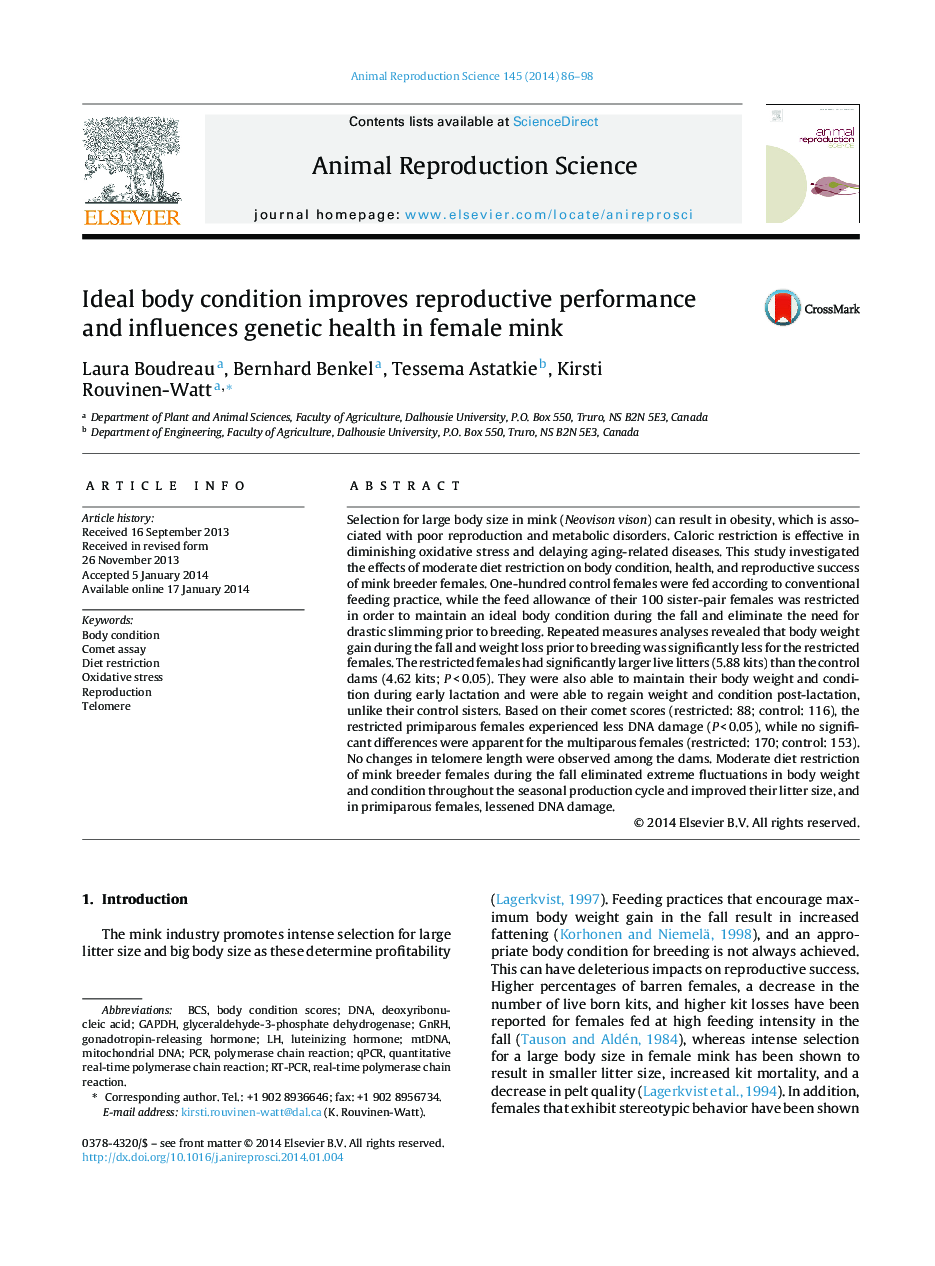| Article ID | Journal | Published Year | Pages | File Type |
|---|---|---|---|---|
| 2072889 | Animal Reproduction Science | 2014 | 13 Pages |
Selection for large body size in mink (Neovison vison) can result in obesity, which is associated with poor reproduction and metabolic disorders. Caloric restriction is effective in diminishing oxidative stress and delaying aging-related diseases. This study investigated the effects of moderate diet restriction on body condition, health, and reproductive success of mink breeder females. One-hundred control females were fed according to conventional feeding practice, while the feed allowance of their 100 sister-pair females was restricted in order to maintain an ideal body condition during the fall and eliminate the need for drastic slimming prior to breeding. Repeated measures analyses revealed that body weight gain during the fall and weight loss prior to breeding was significantly less for the restricted females. The restricted females had significantly larger live litters (5.88 kits) than the control dams (4.62 kits; P < 0.05). They were also able to maintain their body weight and condition during early lactation and were able to regain weight and condition post-lactation, unlike their control sisters. Based on their comet scores (restricted: 88; control: 116), the restricted primiparous females experienced less DNA damage (P < 0.05), while no significant differences were apparent for the multiparous females (restricted: 170; control: 153). No changes in telomere length were observed among the dams. Moderate diet restriction of mink breeder females during the fall eliminated extreme fluctuations in body weight and condition throughout the seasonal production cycle and improved their litter size, and in primiparous females, lessened DNA damage.
